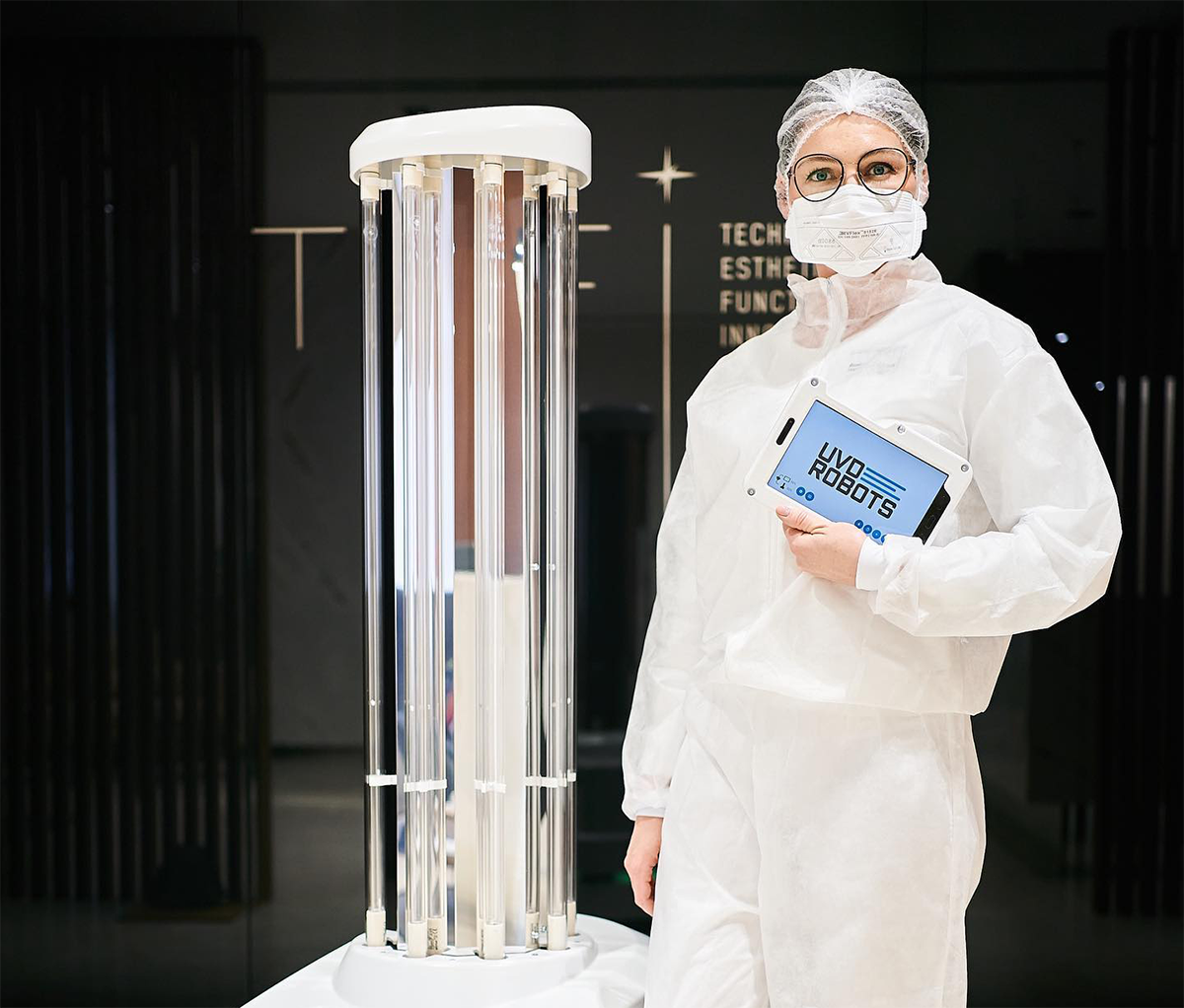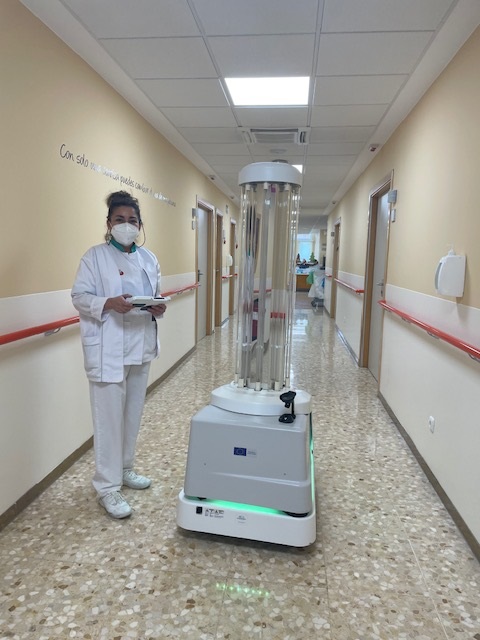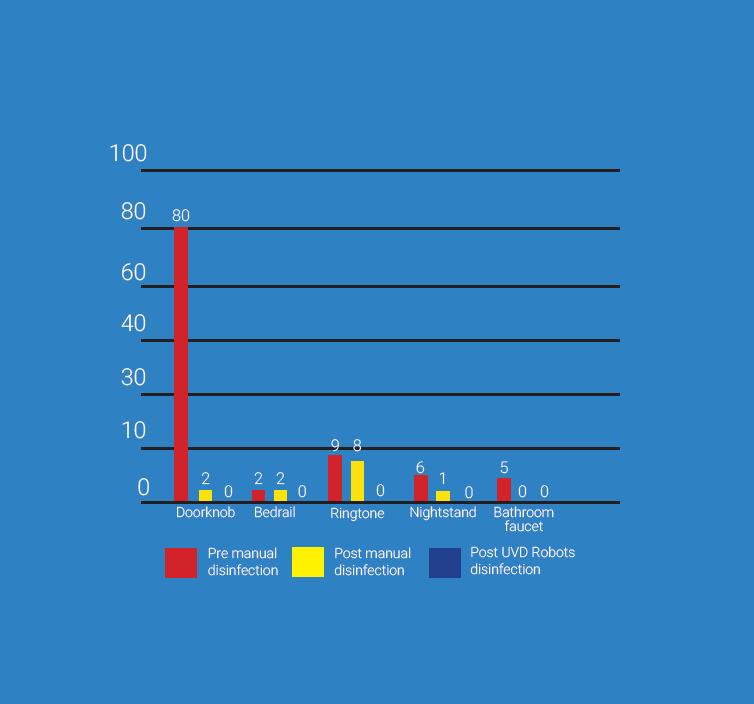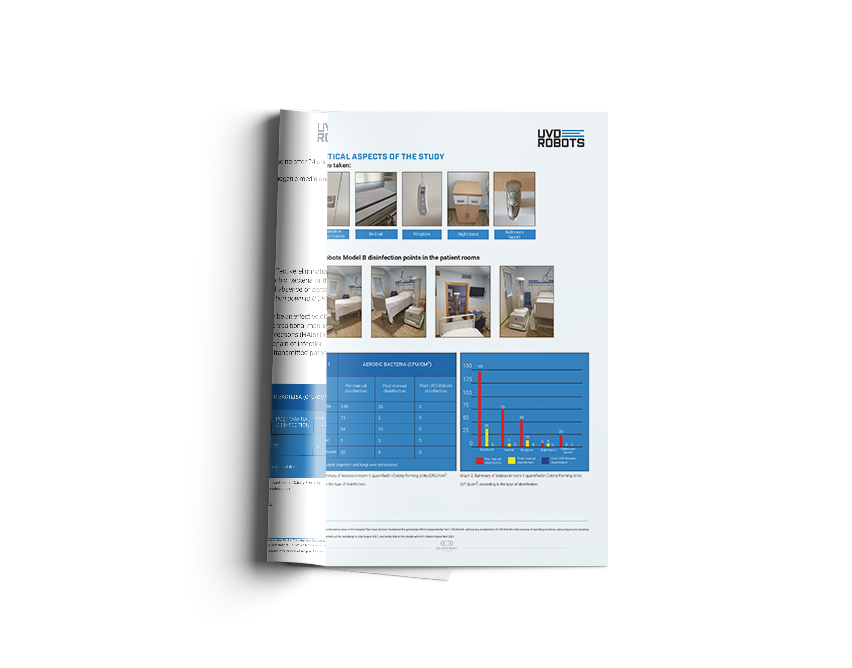Title
Content
Title
Content


Environmental contamination in hospitals represents a risk of transmission of infections between patients and professionals; a proper cleaning and disinfection of the surfaces and the air contribute to reducing this transmission.
During July and August 2021, the hospital laboratory at "San Juan De Dios", Zaragoza carried out a quantitative microbiological study on various surfaces of the patient rooms in order to compare the efficacy of the disinfection performed by the UVD Robot against traditional disinfectants.
A total of 60 samples of “high-touch surfaces“ were collected in four (4) rooms after the patients were discharged.
Surfaces analyzed in each room* (10 cm2 of each location):
- door handle
- bed rail
- patient ringtone
- nightstand
- bathroom faucet
*Surfaces directly exposed to the UVGI of the UVD Robot
Three microbiological samples have been collected on each of the surfaces:
- before manual cleaning/disinfection
- after manual cleaning/disinfection
- after UVD Robot disinfection

Sample collection method: with a sterile swab moistened in Brain Heart Infusion (BHI) medium and rubbing the surface to be analyzed for 30 seconds.
The swab was cut with sterile scissors and introduced into the BHI medium, immediately transporting it to the laboratory where it was mixed with vortex for 30 seconds. Subsequently, 0.5 ml of medium has been inoculated on the surface of the culture media selected for the isolation and quantification of aerobic bacteria and fungi:
- Mueller-Hinton agar
- MacConkey Agar
- Blood Agar
- Sabouraud Agar
The samples have been incubated aerobically for 48 hours at 37oC reading after 24 and 48 hours.
Suspicious multi-resistant organisms have been subcultured in chromogenic media and/or processed on the BD Phoenix Analyzer to detect:
- MRSA
- Vancomycin resistant Enterococci (VRE)
- ESBL-producing Enterobacteriaceae
- Carbapenemase-producing Enterobacteriaceae (CPE)
- Carbapenem-resistant Pseudomonas aeruginosa

Standard cleaning and disinfection methods showed accumulated effective elimination of 84% (481 CFUs/cm2 after patient discharge down to 77 CFUs/cm2) of the aerobic bacteria in the four patient rooms.
The results after disinfection with a UVD Robot showed a total absence of aerobic bacteria on all sampled locations (77 CFUs/cm2 after manual cleaning and disinfection down to 0 CFUs/cm2 ).
Consequently, environmental disinfection with the UVD Robot proved to be an effective disinfection tool. The UVD Robot attributed to complementary inactivation efficacy to the traditional manual cleaning and disinfection, showing potential in reducing the healthcare associated infections (HAIs) in the hospital.
The total eradication of the environmental contamination breaks the chain of infection by limiting the risk of transmission, thereby limiting the chances of environmentally transmitted pathogens causing HAIs.

This paper examines the environmental germicidal inactivation efficacy of a UVD Robot in healthcare settings, specifically four patient rooms at the hospital “San Juan De Dios”, Zaragoza, Spain.